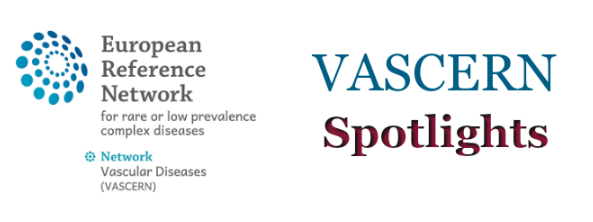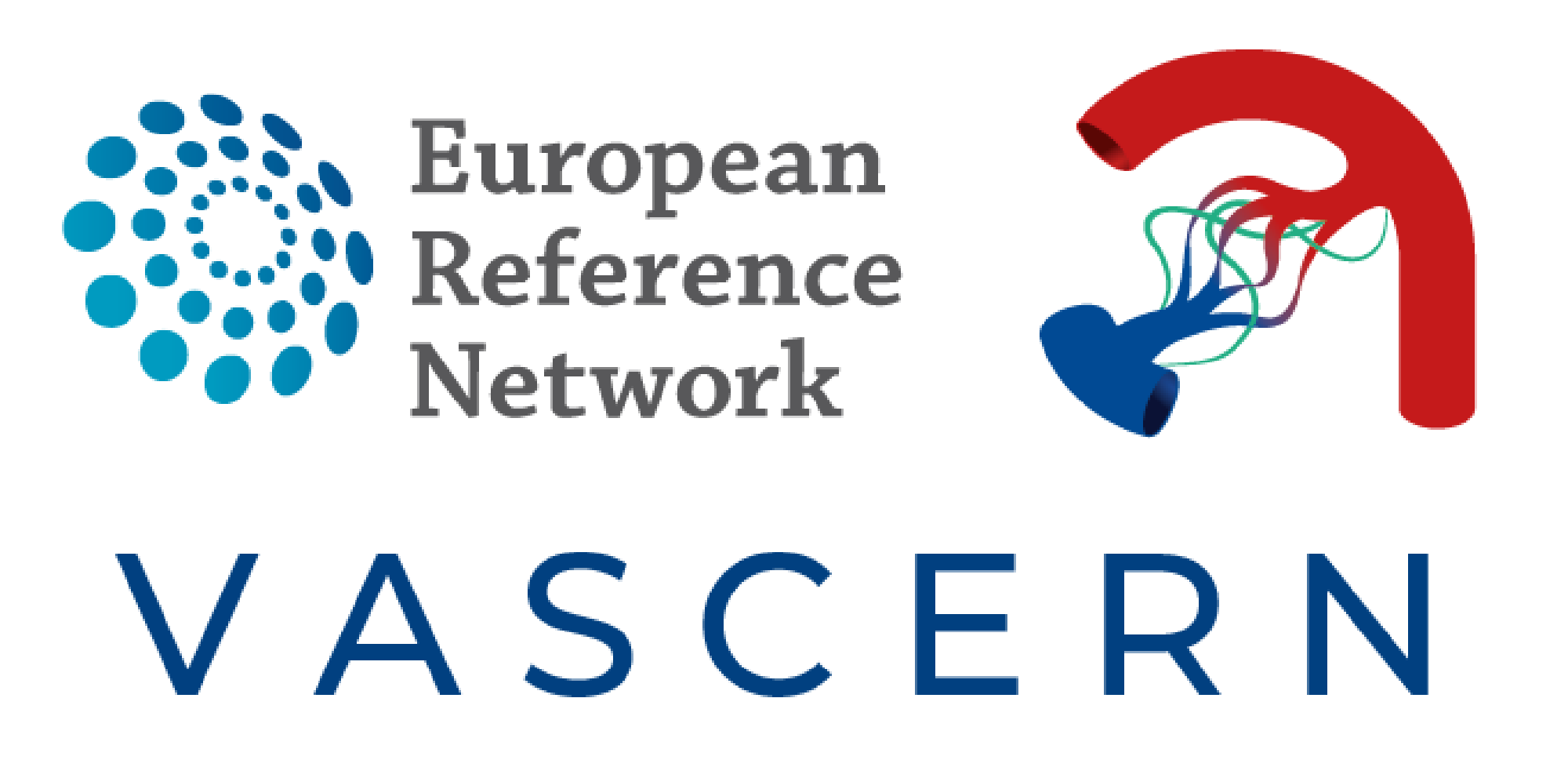

This month we have the pleasure to talk to Elena de Moya Rubio, European Patient Advocacy Group (ePAG) Co-Chair for the Heritable Thoracic Aortic Diseases (HTAD) Working Group (WG), from Spain now living in Germany. Elena represents the German Marfan Syndrome Patient Organisation, Marfan Hilfe (Deutschland) e.V., and explains the challenges faced by rare disease patients, her most memorable moments since joining VASCERN and her hope that the European Reference Networks (ERNs) will lead to more awareness in the medical community for rare diseases so that no patient goes without a proper diagnosis and care.
1. How did you become involved in the VASCERN project?
I first read about the ERNs in the EURORDIS newsletter when they announced the creation of the networks. I immediately wrote to the board of my patient organization telling them, “finally something where I think I can use my expertise as a translator and my knowledge as a Marfan patient”! By joining VASCERN I felt that I could help both our members in Germany, but also patients in Europe and all over the world…and so I felt that I had finally found my place!
2. How do you as an ePAG patient advocate participate in the activities of VASCERN?
This has evolved since I joined in April 2018 as I started as a patient advocate with Lise Murphy (former ePAG Co-Chair for HTAD) and we were doing everything just the two of us. Then the HTAD-WG started to grow a little more and in October 2019 I became the ePAG Co-Chair for HTAD when Lise had to leave us, and Françoise Steinbach stepped in as ePAG Deputy Co-Chair. My role is to represent the voice of the patients in the HTAD-WG and bring questions back to discuss in the ePAG. I am involved in at least 4 meetings per month: the ePAG Co-Chair meeting, the HTAD-WG meeting, the EURORDIS VASCERN ePAG meeting and the HTAD ePAG meeting. There is a lot of work involved (e.g. preparing for meetings, sending e-mails, getting feedback, etc.) that you would not necessarily realise until you are doing it.
In addition, whenever there is a conference or workshop or any other opportunity to learn more or better represent the patient community then I try to participate or have another patient advocate represent us. The E3 summit with the Marfan Foundation was a great example of this as we provided 6 webinar sessions to patients in several languages. This is very important as we have realized that when looking for information on a disease, patients (and clinicians) often only read information in their native language. So, I am involved in most of the various projects of the HTAD-WG, including the translation of the Pills of Knowledge video subtitles or all other published Clinical Decision Support Tools, like the Do’s and Don’ts Factsheets, so that they can reach a wider audience.
3. What is one thing that you would like the general public to know about the reality of living with a rare disease (or caring for someone with a rare disease)?
There are three approaches that I will use to answer this question: invisible, challenging, and future decisions.
Invisible: The reality of living with a rare disease is that most rare diseases are invisible. So our first hurdle is having a handicap and not being seen, so when you ask for a slower pace or someone to give up their seat on the bus or when you ask for anything, it needs to be explained and we always need to justify ourselves.
Challenging: The biggest difference from non-rare diseases is the lack of knowledge and sensitivity in the healthcare community and in the general public about our needs. In VASCERN, we deal with multisystemic vascular diseases, which means that the disease affects various systems in our body, so we need, amongst many other specialities, cardiologists, ophthalmologists, gynaecologists, physical therapists and, in many cases, they don’t know about the disease. And a disease is more than mere physical symptoms. It also affects your quality of life, so we also need psychosocial support. There are some specific things that need to be taken into account with our diseases and we often need to teach them about these things. One of my doctors says “do you know that I learn more from you than from any conference I attend”? We are often mentoring clinicians, insurance and health care supply store employees, etc. We are living with our diseases 24 hours per day, in our own socioeconomic environment, so every patient/person is different, even within the same family where the disease is caused by the same mutation. This means that we are all experts from living our OWN disease.
Future decisions: Everyone struggles with making future decisions, but we have more obstacles and considerations to take into account when making them. For example, I would have loved to be a translator for the European Commission in Brussels, as I did translation studies, but I soon learned that they have one of the most stressful jobs and I was told that I must avoid stress due to my disease (as it could kill me). I therefore had to re-evaluate my career choice. I should point out though that although we have many challenges, we are still able, nearly always with help from others, to learn how to reach our goals and how to adapt our initial goals in order to make it possible. It is not that we cannot do what we dreamed of; we just have to adapt our dreams to our new reality. Some Marfan parents say “my child loves basketball” and for teenagers it can be harder to hear that they can no longer play the sport they love than to hear the diagnosis itself. What we recommend to parents is to tell their children that they might become a trainer, so they are surrounded by the sport and still actively involved, but they are not the ones competing and engaging in the physical contact that is dangerous. It’s all about adapting.
4. Can you tell us a little about your rare disease and/or the patient association that you represent?
I represent Marfan Hilfe (Deutschland) e.V. Although the name only mentions Marfan syndrome, we represent all heritable thoracic aortic diseases and we also have a few vascular Ehlers-Danlos syndrome (vEDS) and hypermobile EDS patients who joined before genetic testing was able to give them their exact diagnosis or more was known about the differences, as they share clinical similarities with HTAD. We also have a Loeys-Dietz syndrome subgroup, with a separate website and a brand new leaflet, but we are all a big family. We are very active and meet regularly, although due to Coronavirus it has changed from in-person to virtual, and offer workshops and other events to our patient community. We also have regional support groups that meet once or twice a year and a magazine where we summarize the latest news, including VASCERN news.
I have Marfan syndrome, which is a rare disorder of the connective tissue. It is a multisystemic disease which means it affects various organs in my body including the heart and its blood vessels, the eyes, the skeleton, the lungs, and the nervous system. I myself have postural tachycardia syndrome (POTS), Tarlov cysts, cervical instability (so sometimes need to wear a neck brace), two intraocular lenses and I had surgery for an inguinal hernia. All not necessarily the first things clinicians think of when they hear “Marfan”. I keep active and do physical therapy in order to avoid things getting worse. The most dangerous complication that can occur is an aortic dissection; it is something that is always at the back of our mind, but as there are no curative treatments yet, except for elective surgery, we make sure to have regular follow-ups to monitor our aorta so as to avoid emergency surgery, and in the meantime, I recommend everybody to live each day to the fullest.
5. What has been your most memorable moment as an ePAG patient advocate so far?
My most memorable moment was the first ePAG meeting I attended in Vienna, Austria in 2018. I can’t really find the words, but the feeling was the same as when I joined my first patient association meeting in Spain. You see others that share exactly your same hopes, goals and challenges, as even though it is not disease specific, it is rare disease specific. It was amazing not only to feel that we are not alone, but to witness the real reach and amount of people involved. Another memorable moment was the first VASCERN Days that I attended in 2018 as I finally met the clinicians in person. Before I was used to seeing them in our HTAD-WG video conference meetings each month, but we only discussed the work packages/projects. The face-to-face meetings offer the coffee/lunch break chats where you discover their characters and personalities, and this leads to a better relationship with them. I was happy to experience this other side of the healthcare professionals and I truly felt like I was one more member of the group and there was not a division between patients and clinicians. I really appreciate this dynamic that we have in the HTAD-WG and I thank Julie De Backer, the HTAD-WG Chair, for the great example of leadership she brings so that patient advocates are appreciated for their unique expertise.
6. As a patient advocate, what is your hope for VASCERN and for the ERNs in general?
Every patient, no matter where they come from or where they live, should receive the best care and treatment available for their rare disease. This means access, in person or via telemedicine, to interdisciplinary care that is up to date with the most current knowledge on their disease. My hope is that no rare disease patient who has seen a doctor leaves without a diagnosis or a referral to an expert centre that can diagnose and treat their condition. This by itself usually brings acknowledgement of the daily issues and a considerable increase of quality of life. There are some patients that have visited several doctors, who did not recognize their disease, but they were diagnosed only when facing an emergency, a situation that could have been avoided. I also think that specific psychosocial support is extremely important for the management of our disease, and while it might be changing in some countries, it is not standard to receive it. This task is often left to the patient support groups, which are not professionals, so this needs to change. I hope that there will be more funding and human resources allocated to the ERNs so that we can continue to progress. Finally, I hope that VASCERN will help to promote research in international and national networks, which is so essential when we are dealing with rare diseases, in order to learn more about them, implement the findings and, as a result, improve the quality of life of patients with rare diseases.


